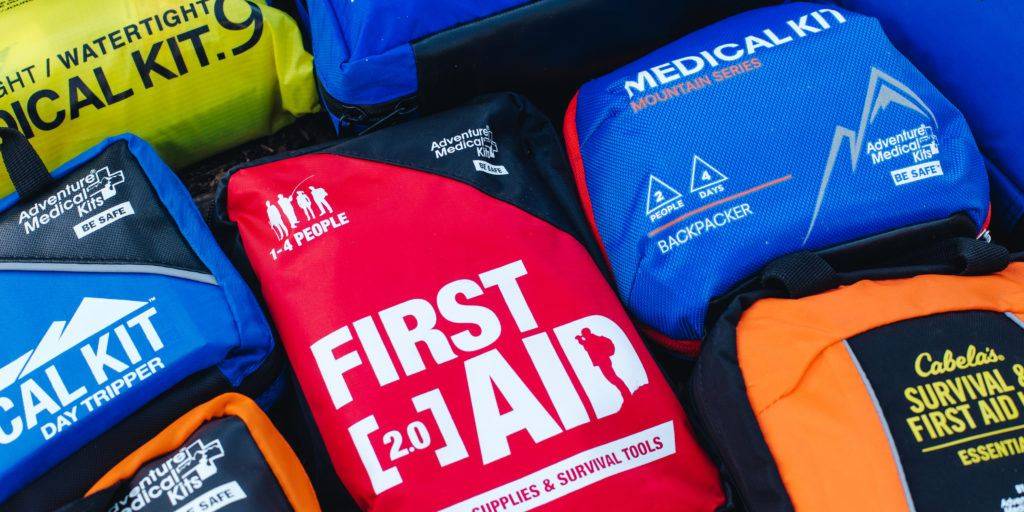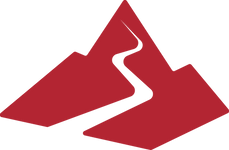
Behind the bench: First aid for trail runners
A Trail Mishap
Even the most weight-conscious runners need the training and supplies to look after health emergencies on the trail.
That’s the knee of my friend Andrea after she crashed during a group run on the High Rockies trail between Chester Lake and Mount Engadine Lodge.
Credit: Andrea Binder-Leckie
In her words, “I just tripped over my own feet and I went down like a four-year-old Superman.” It can happen to any of us regardless of our level of experience.
Fortunately, it was a fall run and Andrea was wearing a set of tights that came down over her calves. Unbelievably, she didn’t notice the bleeding until she caught up with the group. Fortunately, her buddy Cindy had first aid training so when I arrived, she was inspecting the damage to Andrea’s knee.
First Aid without the Kit
None of us had a first aid kit, but Andrea’s wound was clean and Cindy carefully re-covered it with her tights. When Cindy determined that it was okay for Andrea to walk, another runner and I ran back to the trailhead to get a car while the rest of the group took Andrea downhill to the trail’s end. They treated her at the emergency ward (where many, many photos were taken) and has since made a full recovery.
We were lucky that Cindy had first aid training, and we were skillful in evacuating Andrea safely, but Andrea and Cindy agree it would have been better if we had some basic first aid supplies.
The Runner's Dilemma
So here’s the dilemma. We don’t enjoy carrying excess weight when we’re running, but we need to carry some basics to make sure we’re protected. What do we take?
To me, the most important thing is also the lightest. First aid skills weigh nothing and any decent wilderness first aid course will teach you how to improvise with what you have. It’ll also show you how to set treatment priorities and plan a successful evacuation.
Some Advice from a Professional
But we need to take some stuff and Dave Watt from Rocky Mountain Adventure Medicine offered us some advice. He and his team teach wilderness first aid at the University of Calgary Outdoor Center and have provided first aid support for events like Sinister 7. Dave is also a veteran ultra runner who started trail running before, in his words, “anyone called it that.” His favourite events are desert runs.
Dave says that when it comes to first aid, it’s not “one size fits all”. After you get some first training, consider the following as you design your kit.
Prevention and Planning
Think prevention. Dave says you’re just as likely to suffer preventable injuries as you are trauma. Make sure you have water, food and protection from the elements. Try to anticipate problems like wet feet or sun exposure. Something as simple as a dry pair of socks or sunscreen and a hat can prevent a host of health issues.
Plan for each run. Every run poses a different hazard. If you want to keep your weight down but remain prepared, you probably won’t take exactly the same kit every time. Assess the hazards of your route, check the weather and change what you take with you.
What are your weaknesses? Are you prone to blisters? Take effective blister treatments you know work for you. Are you a tripper like Andrea? Maybe you want to use poles to avoid tripping. They can double as a splint if something goes wrong.
Consider gear that can serve double duty. Stuff like buffs, poles, jackets and shoe laces are all useful in an emergency. Hand sanitizer and gauze balls can double as fire starter. Consider how your favourite items might also be used for first aid.
Then consider your first aid supplies. You can’t improvise with things you expect will come into contact with wounds, bodily fluids or sources of infection. What you take is highly personal, but some basics can include:
- A few sterile wipes
- Antibacterial ointment, perhaps hand sanitizer
- A couple of simple sterile dressings (Telfa or gauze pads)
- A pair of nitrile gloves (especially if you could be treating other)
- A small amount of athletic or kinesiology tape
Don’t exceed your capabilities. There’s no point taking a suture kit if you don’t actually know how to use it. Bring supplies you’re familiar with.




